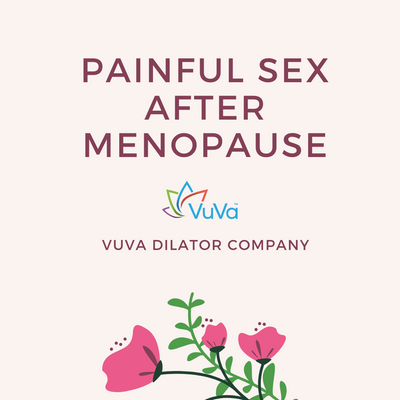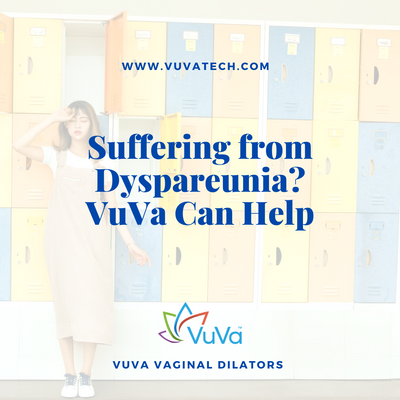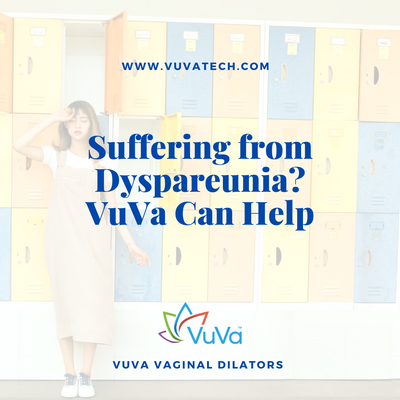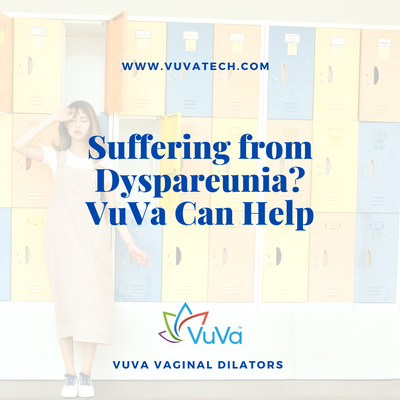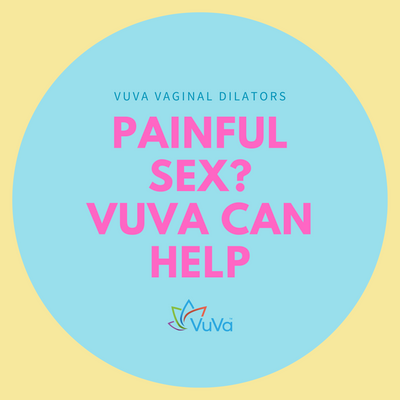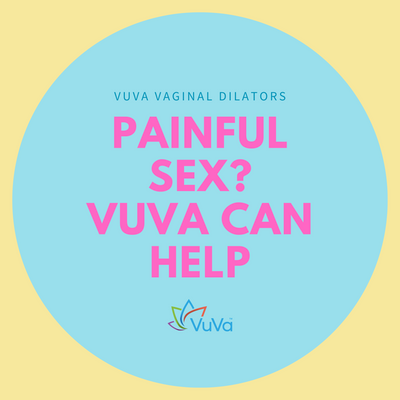
| Tara Langdale
Painful Sex, Vaginal Dryness, and Atrophic Vaginitis: Relief, Remedies, and Regaining Confidence
Painful sex after menopause is a reality for millions of women, but it’s a topic rarely discussed openly. If you’re searching for answers about “vaginal dryness and painful intercourse,” “atrophic vaginitis treatment options,” or “how to treat vaginal atrophy naturally,” you’re not alone. These symptoms can be distressing, but there are effective solutions—and you can reclaim comfort, pleasure, and confidence in your intimate life.
This comprehensive guide explores the causes and symptoms of atrophic vaginitis, why sex can hurt after menopause, the best treatments and home remedies, and how innovative tools like VuVa Magnetic Dilators—made in America—can help you heal and thrive.
Table of Contents
-
The Link Between Menopause, Vaginal Dryness, and Painful Sex
-
What Is Atrophic Vaginitis?
-
Symptoms and Signs: How to Recognize Atrophic Vaginitis
-
Causes and Risk Factors
-
Atrophic Vaginitis vs. Vaginitis: Key Differences
-
How Atrophic Vaginitis Leads to Painful Sex
-
Diagnosis: What to Expect at the Doctor’s Office
-
Atrophic Vaginitis and Bleeding After Sex
-
Atrophic Vaginitis and Discharge
-
Atrophic Vaginitis and Urinary Symptoms
-
At-Home Remedies and Lifestyle Changes
-
Medical Treatments: From Lubricants to Estrogen Therapy
-
How VuVa Magnetic Dilators Can Help
-
Frequently Asked Questions
-
Moving Forward: Hope, Healing, and Intimacy
1. The Link Between Menopause, Vaginal Dryness, and Painful Sex
Menopause brings many changes, but one of the most common—and least talked about—is vaginal dryness. As estrogen levels drop, the vaginal tissues become thinner, drier, and less elastic. This condition, known as atrophic vaginitis or vaginal atrophy, can make sex uncomfortable or even painful. Many women search for “painful sex after menopause,” “burning sensation during sex menopause,” or “sex hurts after menopause” looking for answers and relief.
2. What Is Atrophic Vaginitis?
Atrophic vaginitis is a form of vaginal inflammation caused by thinning and drying of the vaginal walls due to decreased estrogen. It’s extremely common after menopause, but can also occur during breastfeeding, after certain cancer treatments, or with medications that lower estrogen.
3. Symptoms and Signs: How to Recognize Atrophic Vaginitis
If you’re experiencing atrophic vaginitis, you may notice:
-
Vaginal dryness
-
Burning, stinging, or itching
-
Painful intercourse (dyspareunia)
-
Tightness or discomfort with penetration
-
Light bleeding or spotting after sex
-
Watery, yellowish, or thin vaginal discharge
-
Increased sensitivity or soreness
-
Vaginal irritation after using soaps, lubricants, or condoms
These symptoms can be mild or severe, and often worsen without treatment.
4. Causes and Risk Factors
The main cause of atrophic vaginitis is low estrogen, most often from:
-
Natural menopause
-
Surgical menopause (removal of ovaries)
-
Breastfeeding
-
Cancer treatments (chemotherapy, radiation, hormone therapy)
-
Certain medications for endometriosis or fibroids
Risk factors include lack of sexual activity, smoking, frequent douching, and autoimmune conditions.
5. Atrophic Vaginitis vs. Vaginitis: Key Differences
While “vaginitis” refers to any inflammation of the vagina (often from infection), atrophic vaginitis is specifically caused by hormonal changes and is not an infection. Common search queries like “atrophic vaginitis vs. vaginitis” reflect the need to distinguish between these conditions:
-
Atrophic vaginitis: Dryness, thinning, burning, painful sex, little or no odor.
-
Other vaginitis (bacterial, yeast, trichomoniasis): Discharge with odor, itching, redness, often unrelated to menopause.
6. How Atrophic Vaginitis Leads to Painful Sex
When estrogen drops, the vaginal lining becomes fragile, less lubricated, and less elastic. This leads to:
-
Dryness and friction: Less natural moisture increases discomfort.
-
Loss of stretch: The vagina feels tight, making penetration painful.
-
Fragile tissue: Microtears or bleeding after sex are common.
-
Burning or stinging: Especially at the vaginal entrance or during intercourse.
These issues are common reasons women search for “pain during sex menopause,” “best lubricant for vaginal dryness,” or “how to reverse vaginal atrophy.”
7. Diagnosis: What to Expect at the Doctor’s Office
If you’re experiencing symptoms, see your healthcare provider. Diagnosis usually involves:
-
Medical history: Menopause status, medications, sexual activity, symptoms.
-
Pelvic exam: Checking for thinning, redness, or fragility.
-
Vaginal pH test: Atrophic vaginitis usually raises pH above 5.
-
Discharge sample: To rule out infection if discharge is present.
Don’t hesitate to discuss your symptoms—relief is possible.
8. Atrophic Vaginitis and Bleeding After Sex
Light bleeding or spotting after sex is a common symptom of atrophic vaginitis, due to fragile vaginal tissue. While alarming, it’s usually not dangerous. However, always report postmenopausal bleeding to your doctor to rule out other causes.
9. Atrophic Vaginitis and Discharge
Unlike infections, discharge from atrophic vaginitis is typically thin, watery, or yellowish, and usually odorless. If you notice a strong odor, itching, or thick discharge, see your provider to rule out infection.
10. Atrophic Vaginitis and Urinary Symptoms
Estrogen affects the urinary tract too. Many women experience:
-
Burning with urination
-
Increased urgency or frequency
-
Recurrent urinary tract infections (UTIs)
-
Mild incontinence
Treating vaginal atrophy often improves these symptoms.
11. At-Home Remedies and Lifestyle Changes
While medical treatment is often needed, you can try:
-
Gentle cleansing: Use unscented, mild soap; avoid douching.
-
Cotton underwear and loose clothing: Reduces irritation.
-
Regular sexual activity: Keeps vaginal tissues healthy and elastic.
-
Water-based lubricants: Use before sex to reduce friction.
-
Vaginal moisturizers: Hydrate tissues for longer-term relief.
Searches like “atrophic vaginitis home remedies” or “how to treat vaginal atrophy naturally” reflect the desire for gentle, accessible solutions.
12. Medical Treatments: From Lubricants to Estrogen Therapy
1. Lubricants and Moisturizers
-
Over-the-counter, water- or silicone-based lubricants help with sex.
-
Vaginal moisturizers provide longer-lasting hydration.
2. Topical Estrogen Therapy
-
Creams, tablets, or rings restore moisture and elasticity.
-
Minimal absorption into the bloodstream; safe for most women.
3. Non-hormonal Prescription Options
-
Ospemifene (oral pill) and DHEA vaginal inserts.
4. Laser or Radiofrequency Therapy
-
Stimulates collagen and tissue healing (ask your provider about risks and benefits).
13. How VuVa Magnetic Dilators Can Help
For women with atrophic vaginitis and painful sex, vaginal dilators can be life-changing. VuVa Magnetic Dilators, made in America, offer unique benefits:
-
Gentle, progressive stretching: Sets come with sizes to start small and progress comfortably.
-
Embedded medical-grade magnets: Promote increased blood flow and help relax pelvic floor muscles, supporting healing and comfort.
-
Body-safe materials: Non-porous, easy to clean, and safe for sensitive tissues.
-
Confidence and empowerment: Regular use helps reduce pain, tightness, and anxiety about intimacy.
How to Use VuVa Magnetic Dilators:
-
Start with the smallest size and use plenty of water-based lubricant.
-
Insert gently, never forcing it.
-
Practice deep breathing and relaxation.
-
Gradually progress to larger sizes as comfort increases.
-
Use regularly, as advised by your provider or pelvic floor therapist.
Dilators can be used alongside estrogen therapy, lubricants, or moisturizers for best results.
14. Frequently Asked Questions
Q: Can atrophic vaginitis be reversed?
A: With proper treatment—topical estrogen and/or regular dilation—symptoms can be greatly improved or reversed.
Q: What is the best lubricant for vaginal dryness?
A: Water-based or silicone-based, fragrance-free lubricants labeled for sensitive skin.
Q: Are VuVa Magnetic Dilators safe with estrogen creams?
A: Yes. They can be used together; follow your provider’s instructions.
Q: Will treating vaginal atrophy help with urinary symptoms?
A: Often, yes—restoring estrogen to vaginal and urethral tissues can reduce burning, urgency, and UTIs.
Q: How long does it take to see results?
A: Many women notice improvement within a few weeks to a few months of consistent therapy.
15. Moving Forward: Hope, Healing, and Intimacy
Atrophic vaginitis and painful sex after menopause are not inevitable parts of aging. You deserve comfort, pleasure, and confidence. Through a combination of lifestyle changes, medical therapy, and innovative solutions like VuVa Magnetic Dilators, you can restore vaginal health and enjoy intimacy again.
Ready to take the next step?
Learn more about VuVa Magnetic Dilators and how they can support your journey to healing and pleasure.
This article is for informational purposes only and does not replace professional medical advice. Always consult a healthcare provider for diagnosis and personalized treatment.

